- Home
- Jack Kerouac
The Unknown Kerouac Page 2
The Unknown Kerouac Read online
Page 2
It’s not surprising that Kerouac would be made to feel shame for his ethnic background; as Joyce Johnson underscores in The Voice Is All, in the early twentieth century “French Canadians were despised by workers of other nationalities because they were willing to take the worst jobs . . . The Massachusetts Department of Labor called them ‘the Chinese of America’.”4 Like their cousins up north in Québec, New England French Canadians were also called “frogs, pea-soupers, dumb Canucks, white niggers,”5 and often told to “speak white” on the factory floor. Speaking “white,” of course, meant speaking English. Henry James, in his essay on “Quebec,” had described French Canadian women as “genuine peasants of tradition, brownfaced,” and habitually refers to Canucks as “brown” people—in addition to comparing them to field animals with “bovine stare” and “simple, unsharpened faces,” speaking a “narrow patois, in their ignorance and naiveté.”6 James’s prejudice against French Canadians reflects what was a widespread sentiment across the continent among Anglophones.
Kerouac’s particular ethnic and linguistic position calls to mind a passage from Friedrich Schleiermacher’s 1813 treatise On the Different Methods of Translating. Schleiermacher writes: “[I]f someone has turned against nature and custom and deserted, as it were, his mother tongue, devoting himself instead to another, it need not be affectation or mockery when he assures us he is no longer in a position to move freely in his native language; rather, by this justification he is seeking to convince himself that his nature really is a natural wonder that subverts all hierarchies and laws, and to reassure others that he is at least not walking about double like a ghost.”7 In Kerouac’s case, he did more than convince himself that he was “a natural wonder”; he managed to convince the world, becoming known as one of the most quintessentially “American” authors of his age. But he never shook the feeling of “walking about double like a ghost.” Kerouac is “doubled” in more ways than one: open road hitchhiker and reclusive hermit; young anti-establishment Cold War sexual rebel and aging right-wing conservative living with his mother; All-American football jock and bookworm egghead intellectual; melancholy Catholic and ecstatic Buddhist; native French speaker and internationally acclaimed writer of English prose and verse, to name just a few. Kerouac addressed his fundamental bilingualism in the first draft of Memory Babe, a text published here for the first time: “American writers who write and speak in one language are lucky. I write in English but I speak French to my family . . . What I have to do here is transpose the French talk into understandable modern American English, and then add the exact sound-spelling of the old French behind it, in italics parenthesized, in case any French or French students are interested . . . I want the reader to see what I had to go through and how much work it is to know two languages.”8 In Kerouac’s revised typescript he altered the final sentence to read: “I want the reader to see what I had to go through and what fun it was to know two languages.” Hiding his pained relation to his mother tongue, Kerouac revises the sentiment to make it more upbeat. This elision is pure Kerouac: the surface of pleasure shown to the public belies the tremendous toil and craft undertaken behind closed doors.
Like other notable twentieth-century writers such as Joseph Conrad, Vladimir Nabokov, and Samuel Beckett, Kerouac wrote literary masterpieces in an adopted language. For years, only John Sampas, Kerouac’s brother-in-law and legal literary representative, knew with certainty that Kerouac had written multiple secret French narratives. When he first examined the extent of Kerouac’s carefully arranged archive over two decades ago, Sampas discovered La nuit est ma femme and immediately commissioned an amateur translation by a local Lowellian.9 Narrated by one Michel Bretagne, a French Canadian aspiring writer, The Night Is My Woman is one of the most candid, moving, and raw texts Kerouac wrote, and is the last story he penned before sitting down to type the 1951 On the Road scroll. The narrative consists of an incomplete review of “all the jobs I ever had in this earth of labor and sorrow,” as Kerouac himself describes it in Visions of Cody, the novel in which he offers the most clues regarding his private French writings..10
In a sense we’ve always been reading Kerouac in translation. “The reason I handle English words so easily,” Kerouac wrote in 1950, “is because it is not my own language. I refashion it to fit French images.”11 This confession is from a letter he sent to the French Canadian critic Yvonne Le Maître in response to her review of his first novel, The Town and the City. The French-language review had appeared in Le Travailleur, a New England paper in which Le Maître had discerned a “curious ancestral lacuna” in young John Kerouac’s first novel:12 the newly fledged novelist had deliberately concealed his true origins. Indeed, John or “Jack” Kerouac was born Jean-Louis Lebris de Kérouac in Lowell, Massachusetts, to French Canadian parents who were born north of the border in the province of Québec, and he did not speak English until he was six years old—even at twenty-one, Kerouac himself admits in the same letter, he “was still somewhat awkward and illiterate-sounding in my speech and writings.” Both the Lévesques—on his mother’s side—and the Kerouacs were among the approximately 900,000 French Canadians who migrated to New England in search of work and a better life during the second half of the nineteenth and beginning of the twentieth centuries—a period of Québécois diasporic history referred to as the “Exodus” in which the province’s French-speaking population was essentially cut in half.13 As Kerouac put it in Visions of Gerard, it was a time when New England saw “the whole troop coming down from the barren farm, to the factories of U.S.A.”.14
Kerouac was thus a native French speaker and child of working-class immigrants, part of what was then considered a “backward” ethnic group known as French Canadians or Canucks.15 As Kerouac’s Lowell-based works reveal—especially Visions of Gerard, Doctor Sax, and Maggie Cassidy—his childhood was steeped in the culture, mores, religion, and language of French Canada. In his earliest boyhood, the sense of group unity and community among New England Canucks was at its peak: “Centerville in Lowell in 1925,” he writes in Gerard, was “a close knit truly French community such as you might not find any more.”16 Kerouac’s lifetime, 1922 to 1969, in fact corresponds to the apex and decline of French Canadian survivance in the United States. The deterioration of survivance—the name of the Québec diaspora’s rallying cry, a mix of survival and resistance—helped foster Kerouac’s perennial sense of homelessness and his lifelong contradictory inclinations toward both wanderlust and sedentary life at the side of his mother—the one person with whom he could always speak his mother tongue without fear of being misunderstood or mocked. In his 1951 journal, he formulates this “Canuck dualism” quite pithily: “Il faut vivre en Anglais, c’est impossible vivre en Français [You have to live in English, it’s impossible to live in French]. This is the secret thought of the Canuck in America. C’est important aux Anglais—it’s important to the English . . . so the Canuck does it.”
Yet Kerouac also took great pride in his lineage, especially at the level of language. As he reveals in a short piece about his paternal grandfather, “The Father of My Father,” Kerouac considered his mother tongue to be a language filled with ancient power. “The language called Canadian French is the strongest in the world,” Kerouac wrote. “It is too bad one cannot study it in college, for it is one of the most languagey languages in the world. It is unwritten; it is the language of the tongue and not of the pen. It grew from the lives of French people come to America. It is a terrific, a huge language.”17 Unsurprisingly, then, in The Night Is My Woman we encounter a Kerouac who vacillates between pride and shame. Take, for instance, the narrator’s stint on the construction job in Portsmouth when he hears the other French Canadians speak in English: “The guys told stories—in English, a curse word at each end, as though they were afraid of being sissies speaking French. In two years they were all going to be on the beaches of the South Pacific.” The fear of not measuring up to the American ideal of masculinity is here associated with their
subsequent sacrifice for their adoptive nation in World War II. Or the scene when the narrator’s college friends from New York come to pick him up and he confesses: “With them I spoke in English and I was a completely different man.” This public “different man” is the Kerouac most readers have known for years; with Kerouac’s two longest French narratives, The Night Is My Woman (La nuit est ma femme) and Old Bull in the Bowery (Sur le chemin), offered here for the first time in translation, readers are finally able to meet the other, unknown Kerouac.
Kerouac’s French writings are a testament to his prodigious linguistic genius; steeped in the rhythm of his formative years, they embody what Kerouac sought to attain through his modern spontaneous method, a raw kind of improvised bebop, a musicality set down onto paper. Disorienting at first, the narrative structure of Old Bull in the Bowery follows the logic of a jazz session, where each musician has his moment to stretch out, culminating in an ensemble performance. The final “solo” of Old Bull is in fact a description of a jazz session in which one of the characters has just participated.
Old Bull in the Bowery is the title Kerouac gave to his incomplete translation of Sur le chemin. As others have noted, the original French title gives us a new appreciation of what it really means to be “on the road.” To be “sur le chemin,” as opposed to “sur la route”—the word used in the European French translation of On the Road—means to be on the way, on the trail or, more literally, “on the path.” The French title is protean with spiritual connotations, pointing toward the ritual of the Catholic pilgrimage that fascinated Kerouac, along with the Eastern doctrines of Tao and Buddhism that Kerouac studied for years.
Sur le chemin was composed in five days—December 16–21, 1952—at William S. Burroughs’s residence in Mexico. It is the missing link in the evolution of On the Road. In January 1953, immediately after completing the manuscript, Kerouac wrote Neal Cassady a letter casting this novel as nothing less than the key to all other versions of On the Road: “In Mexico, after you left, I in 5 days wrote, in French, a novel about me and you when we was kids in 1935 meeting in Chinatown with Uncle Bill Balloon, your father and my father and some sexy blondes in a bedroom with a French Canadian rake and an old Model T. You’ll read it in print someday and laugh. It’s the solution to the ‘On the Road’ plots all of em and I will hand it in soon as I finish translating and typing.”18 Kerouac did try to translate it—several times. A few notebooks in his papers contain different English versions of the opening to Sur le chemin, and there is an incomplete typescript translation from 1954 with a little more than half the complete text. The latter is Kerouac’s longest and most sustained effort to translate Sur le chemin, and this typescript, revised in Kerouac’s hand, represents the bulk of Old Bull in the Bowery as printed here.
Although this typescript proved invaluable, it is incomplete and the original French manuscript itself was scattered among several notebooks; Sur le chemin took me several years to reconstitute and can now be read in its original French patois in the volume titled La vie est d’hommage.19 Yet Kerouac’s typescript translation was essential both for translating the remainder and for reconstructing the original text: as a sustained example of Kerouac’s own idiosyncratic translation practices, it was at once my guide and my narrative map to stitching together the scattered pieces of text in the correct order. The two notebooks listed in the Kerouac finding aid at the New York Public Library as “Sur le Chemin” and “French Old Bull” together make up about 70 percent of the complete novel. The other 30 percent was not listed and needed to be found. This required an understanding of Kerouac’s compositional methodology, the system of symbols and codes he used for additions and inserts, and immersion in the author’s precise situation at the tail end of 1952. There was also the ongoing challenge of properly deciphering and transcribing the unique phonetic quality of Kerouac’s French—Kerouac did not write in standard French but rather wrote phonetically using “sound-spelling,” as he explains in Memory Babe.
Once the text for Sur le chemin was reconstituted, I studied Kerouac’s translation practices, scouring his work for any equivalent or fortuitous moments of self-translation in order to remain as faithful as possible to Kerouac’s literary project. Visions of Gerard was particularly useful in providing multiple examples of unique French Canadian expressions. I also took note of the few short excerpts from La nuit est ma femme that he had translated—about two pages’ worth—including the first paragraph and the long final passage. All of Kerouac’s extant translations have been kept intact in this volume—my contribution was to finish what he started, hewing as close to his style and literary vision as possible..20
The Old Bull in the Bowery typescript was a revelation: it demonstrated how Kerouac, as a translator, often chose to foreground rather than bury his linguistic foreignness. His hand-edits disclose moments when he deliberately worsens the spoken English of the characters. For instance, he first had Old Bull Baloon say “Not far from here,” but then revises it to “Not far to here,” making the character sound much more French Canadian. Kerouac also favors the original French structure of his sentences as he refashions the images into English. In one of the few paragraphs he translated of The Night Is My Woman, he translates “dans le derriere d’un bus” as “in the behind of a bus” rather than the standard “in the back of a bus.” This practice extends into the narrative voice of Old Bull where Kerouac prevents the original French from being completely assimilated into English.21 Taken as a whole, Kerouac’s translation practices become a means of conveying a sentiment he had shared with his closest confidants and with Le Maître in his response to her review of The Town and the City: “All my knowledge rests in my ‘French-Canadianness’ and nowhere else.” .22
Since, in the early 1950s, the French Canadian language had not yet been given its “laws of scripturality”23—as Édouard Glissant would say—Kerouac further faced the challenge of translating uniquely French Canadian words and expressions. The first sentence of Sur le chemin gives us such a word: bardasseuze, a term that more or less means making an agitated racket.24 In his translation, Kerouac opens: “IN THE MONTH OF OCTOBER, 1935, in the night of our real restless lives, a car came from the West. . . .” Here, it is “restless,” a relatively diminutive word, that translates the more grandiloquent Canuck word. As alternative translations for bardasseuze, in a separate notebook, Kerouac also considered “gloomy,” “disturbed,” and the following neologisms: “behasseled, crawlsome, dawdlesome, bedawdling, folderolsome, botheration.”25 Even the descriptive “a car came from the West” can look demure compared to the full-throttle power of the original’s “y’arriva une machine du West.” An earlier translation by Kerouac takes a stab at retaining more of that structure: “there then came a car from the West,”26 but the “there then” stalls the car’s arrival even more. So in the final revision, Kerouac brings the car in first, making the noun rather than verb the driving force of the sentence. Later in this opening paragraph, he purposefully writes “white line in black floor” rather than “on”; and “old suitcases deboxed with their ropes tied around,” where “deboxed” translates the Canuck patois word degarouillez—all messed-up, out of sorts—and is here used in a manner akin to the standard French déboîté, meaning dislocated, broken, no longer possessing its initial rigid structure. This is precisely the effect of Kerouac’s translative poetics, which dislocates American English from its rigid structures to let it stretch out onto new and unknown territories.
A series of notes that Kerouac folded into the first Sur le chemin notebook provide clues as to why Kerouac considered Old Bull the “solution to the ‘On the Road’ plots all of em,” as he wrote to Neal in that 1953 letter. On a torn piece of now-yellowed paper, Kerouac described how he imagined the bilingual nature of the novel: “For the sake of getting to pure fiction and pure autobiography, I want to dispatch this mixed French On the Road (written Mexicay).”27 Old Bull in the Bowery is indeed mixed; Kerouac inserted four sections of
varying lengths composed in English, two of them eventually incorporated in modified form into what became Visions of Cody. The second longest English section that Kerouac earmarked for Old Bull recounts the history of the Duluoz clan, tracing the father Leo Duluoz’s ancestry back to Brittany and into the New World. Kerouac, who tried to use this material in many of his works-in-progress during the early 1950s, later reworked this particular section obsessively. It reappears, with slight modification of names and other details like dates, locations, adjectives, and exact narrative order, in multiple narratives that were once part of On the Road—sometimes featuring the Martin family from The Town and the City, sometimes new families like the Boncoeurs, the Bernier-Gaos, the Loves, and others, all filed away in “the neatest records you ever saw.”.28
In those same notes Kerouac expands on the wider implications of his new mixed On the Road: “In French a pithy, short, Balzacian novel, in English a profound American Prose novel . . . converting one to another, first to second, translating, deepening, opening out, continenting, capping, reddening-in, endearing to mind. . . .”29 Kerouac has to invent a new verb in order to adequately express his literary imagination: one that is “continenting,” transcending the boundaries of nations to achieve a wider sense of the terrestrial masses on which we tread and where we share our polyphonic lives. Canada, the United States, and Mexico are continented throughout the pages of his manuscripts; borders are only there to mark the liminal points of one’s continenting travels upon the globe, rather than to enforce geopolitical divisions. Kerouac’s road is one that allows readers to create unexpected correspondences across imagined lines, deepening them, opening out our outlook and giving us a taste for adventure and the unknown, endearing us to the Other, even when that other is none other than oneself.

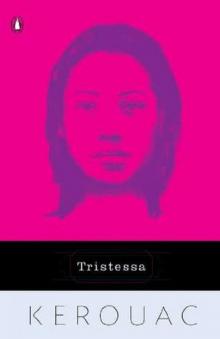 Tristessa
Tristessa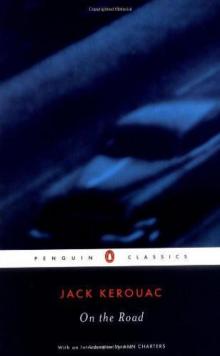 On the Road
On the Road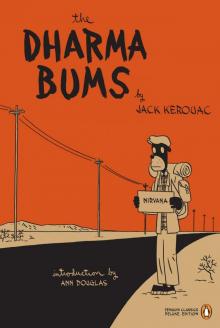 The Dharma Bums
The Dharma Bums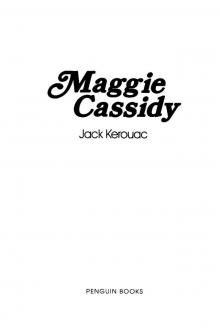 Maggie Cassidy
Maggie Cassidy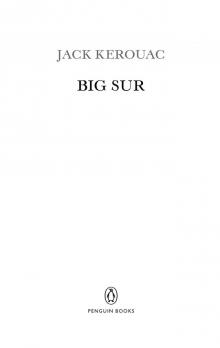 Big Sur
Big Sur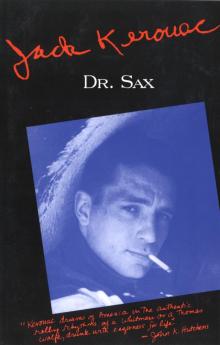 Dr. Sax
Dr. Sax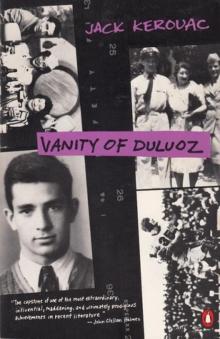 Vanity of Duluoz: An Adventurous Education, 1935-46
Vanity of Duluoz: An Adventurous Education, 1935-46 The Sea Is My Brother
The Sea Is My Brother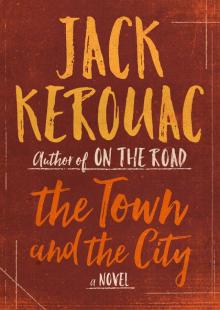 The Town and the City: A Novel
The Town and the City: A Novel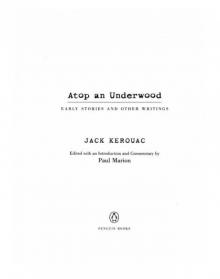 Atop an Underwood: Early Stories and Other Writings
Atop an Underwood: Early Stories and Other Writings Desolation Angels: A Novel
Desolation Angels: A Novel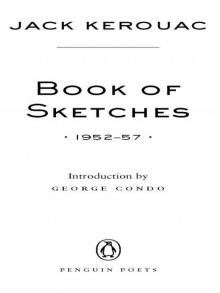 Book of Sketches
Book of Sketches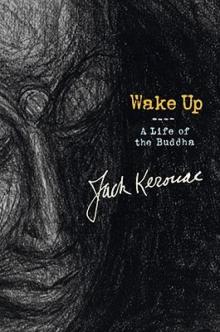 Wake Up: A Life of the Buddha
Wake Up: A Life of the Buddha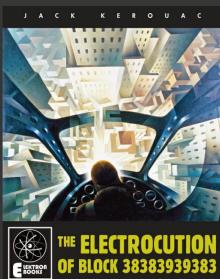 The Electrocution of Block 38383939383
The Electrocution of Block 38383939383 Haunted Life
Haunted Life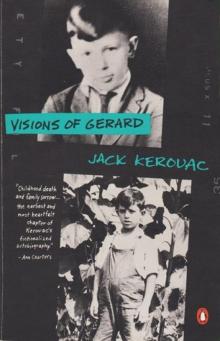 Visions of Gerard
Visions of Gerard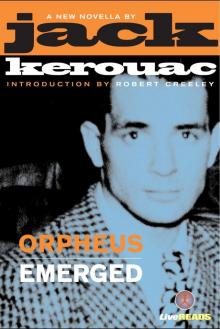 Orpheus Emerged
Orpheus Emerged Book of Blues
Book of Blues The Subterraneans
The Subterraneans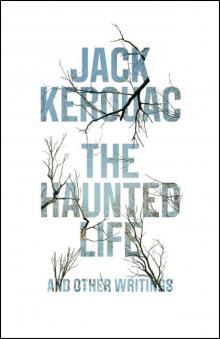 The Haunted Life
The Haunted Life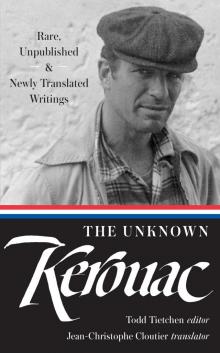 The Unknown Kerouac
The Unknown Kerouac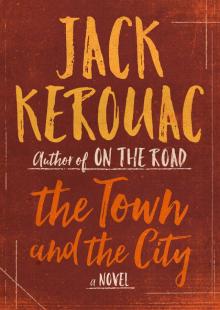 The Town and the City
The Town and the City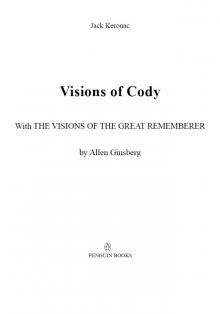 Visions of Cody
Visions of Cody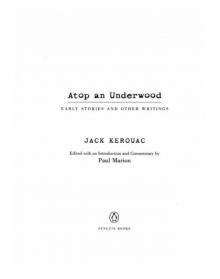 Atop an Underwood
Atop an Underwood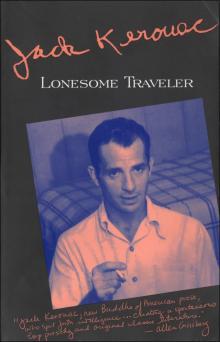 Lonesome Traveler
Lonesome Traveler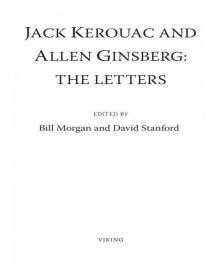 Jack Kerouac and Allen Ginsberg
Jack Kerouac and Allen Ginsberg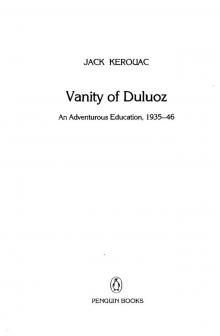 Vanity of Duluoz
Vanity of Duluoz Desolation Angels
Desolation Angels On the Road: The Original Scroll: (Penguin Classics Deluxe Edition)
On the Road: The Original Scroll: (Penguin Classics Deluxe Edition) The Sea Is My Brother: The Lost Novel
The Sea Is My Brother: The Lost Novel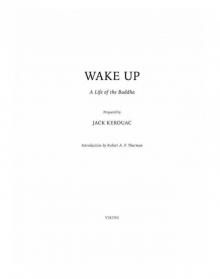 Wake Up
Wake Up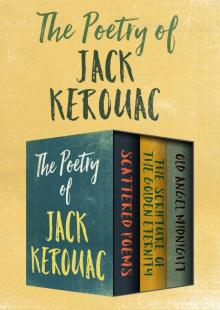 The Poetry of Jack Kerouac
The Poetry of Jack Kerouac Doctor Sax
Doctor Sax